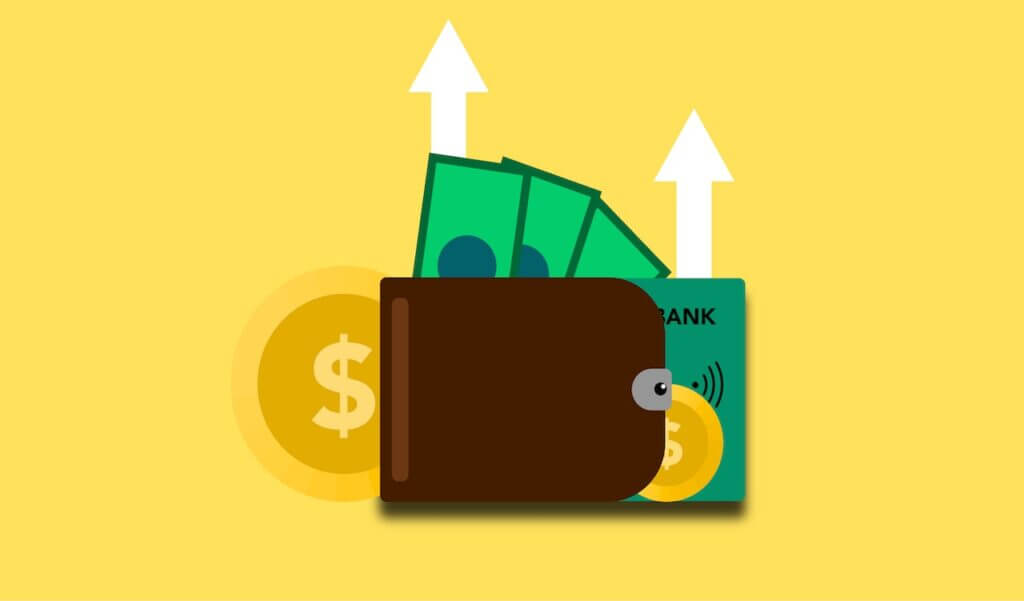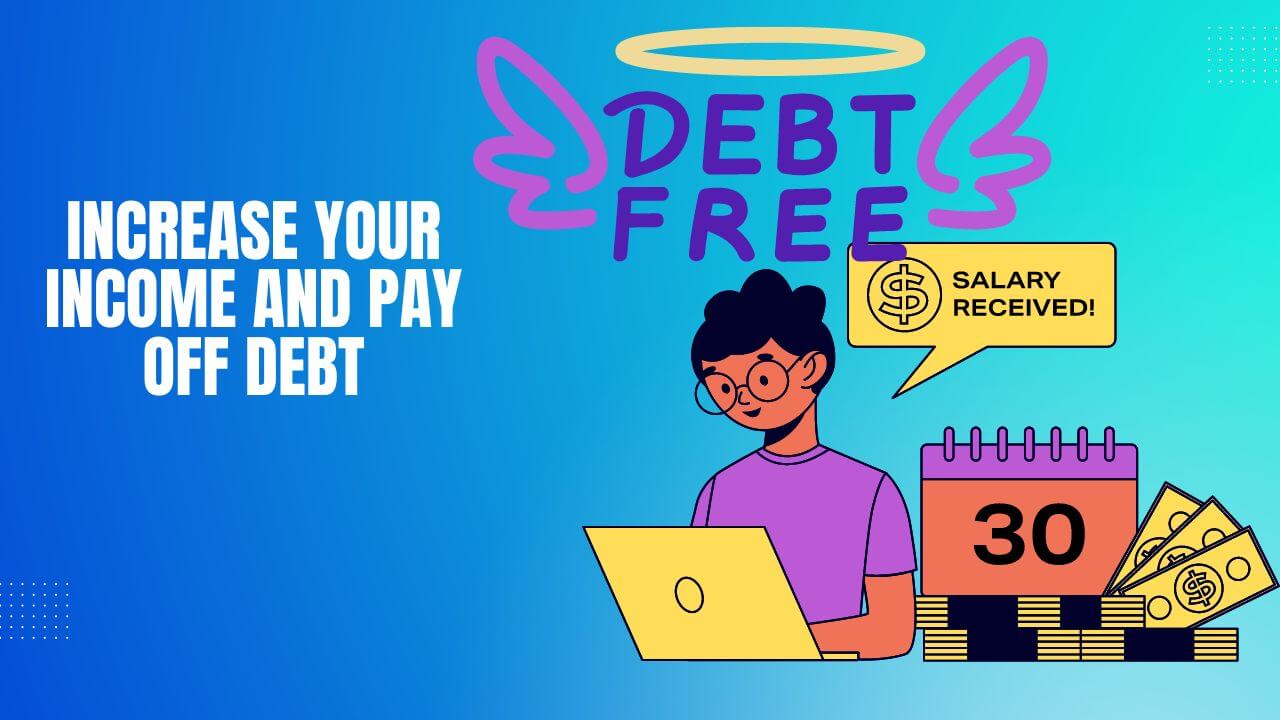Welcome to our article on creative ways to increase your income and pay off debt, tailored specifically for millennials.
As the cost of living continues to rise faster than wages, many young adults find themselves facing unique financial challenges, such as overwhelming student loan debt, costly housing, and a fiercely competitive job market.
But, fear not! In this blog post, we’ll explore innovative and unconventional strategies to help you improve your financial situation.
Gone are the days of simply working harder or cutting back on expenses – it’s time to think outside the box and get creative!
Are you tired of feeling like you’re drowning in debt, with no end in sight? Do you dream of being able to afford the things you truly want, like travel or a down payment on a house?
We hear you, and we’re here to help. By combining income increase and debt reduction strategies, you can create a powerful plan to achieve your financial goals and live a more secure and fulfilling life.
We’re not just talking about getting a side hustle or penny-pinching. Our guide is packed with unique and effective ideas that you may have never considered before.
Whether it’s monetizing your hobbies and passions, finding new income streams, prioritizing high-interest debt, or maximizing tax savings, we’ve got you covered.
So, if you’re ready to take control of your finances and start living your best life, keep reading! Our creative ways to increase your income and pay off debt are specifically designed with millennials in mind, making them practical and easy to implement.
Get ready to learn about some of the most effective and innovative strategies that will help you achieve financial freedom and build a brighter future.
1. Increasing Income
1.1 Monetizing Hobbies and Passions
1.1.1 Identifying Marketable Skills
Gone are the days when earning a decent living meant settling for a boring nine-to-five job. Today, with the rise of the gig economy and the democratization of technology, it’s easier than ever to monetize your hobbies and passions.
By identifying your marketable skills and finding creative ways to leverage them, you can turn your passions into a lucrative source of income.
So, what are your marketable skills? Take a moment to reflect on your interests and hobbies.
Are you an excellent writer or photographer?
Do you have a talent for graphic design or web development?
Are you passionate about cooking or fitness?
Whatever your skills or interests may be, there’s likely a way to turn them into a profitable venture.
1.1.2 Freelancing and Consulting Opportunities
Once you’ve identified your marketable skills, the next step is to find freelancing or consulting opportunities.
Countless websites and platforms connect freelancers with clients who are looking for specific services. You can create a profile on these platforms, showcase your skills and expertise, and bid on jobs that align with your interests and abilities.
Consulting is another option for monetizing your skills. If you have expertise in a particular area, such as marketing, finance, or management, you can offer consulting services to businesses or individuals.
This can be a great way to earn extra income while building your reputation as an expert in your field.
1.1.3 Creating Digital Products and Courses
Finally, consider creating digital products or courses that you can sell online.
This is an excellent option for those with expertise in a particular area, such as cooking, fitness, or graphic design.
You can create e-books, online courses, or digital products like templates or graphics.
Platforms like Teachable and Udemy make it easy to create and sell online courses, while platforms like Etsy and Creative Market are great for selling digital products.
Monetizing your hobbies and passions isn’t just a way to earn extra income – it’s also a way to build a fulfilling and meaningful career. By pursuing work that aligns with your interests and talents, you can find greater satisfaction and purpose in your life.
Plus, with the rise of remote work and flexible schedules, you can enjoy more freedom and autonomy than ever before.

1.2 Finding New Income Streams
If you’re like most millennials, you’re probably looking for ways to boost your income and pay off debt.
Fortunately, there are many creative ways to increase your earnings without sacrificing your lifestyle.
In this section, we’ll explore three proven strategies for finding new income streams that you can start using today.
1.2.1 Part-Time and Gig Work
Thanks to the gig economy, it’s easier than ever to find part-time or short-term work that fits your schedule.
Platforms like Uber, Lyft, and TaskRabbit connect workers with people who need their services.
You can also explore opportunities in retail, hospitality, and other industries.
With part-time work, you can earn extra cash without committing to a full-time job, allowing you to maintain your work-life balance.
1.2.2 Renting Out Unused Space
Do you have a spare room in your home that’s just collecting dust? Why not list it on Airbnb and start earning passive income?
With Airbnb, you can rent out your extra space to travelers from around the world. If you don’t have a spare room, you can still make money by renting out your garage, storage space, or parking spot.
Platforms like Neighbor and Stache make it easy to rent out your unused space, so you can start earning extra income right away.
1.2.3 Selling Unused Items Online
Do you have a closet full of clothes that you never wear? Or maybe you have some old electronics or furniture collecting dust in your home.
Whatever it is, you can turn your unused items into cash by selling them online. Platforms like eBay, Craigslist, and Facebook Marketplace make it easy to connect with buyers and sell your items quickly.
Not only will you make some extra cash, but you’ll also declutter your space and simplify your life.
By finding new income streams, you can increase your earnings and pay off debt faster than you thought possible. Whether you choose to explore part-time work, rent out unused space, or sell your unused items online, there are countless opportunities to earn extra income and achieve your financial goals. Plus, who knows – your side hustle could turn into a full-time business or career opportunity in the future.
2. Reducing Debt
2.1 Prioritizing High-Interest Debt
Debt can be a heavy burden on your finances, but it’s not impossible to overcome.
By prioritizing high-interest debt, you can reduce your debt load and save money on interest payments.
In this section, we’ll explore two proven methods for prioritizing high-interest debt: the snowball method and the avalanche method.
2.1.1 Snowball Method
The snowball method is a debt repayment strategy that emphasizes small wins to build momentum and motivation. It involves listing all your debts from smallest to largest and focusing on paying off your smallest debts first. Here’s how it works:
- List all your debts from smallest to largest, regardless of their interest rates.
- Make minimum payments on all your debts except for the smallest one.
- Put any extra money you have towards paying off the smallest debt.
- Once the smallest debt is paid off, move on to the next smallest debt and repeat the process.
- As you pay off each debt, you’ll have more money available to put toward the larger debts.
The snowball method is effective because it provides a sense of accomplishment and momentum early on in the debt repayment process.
By paying off your smaller debts first, you’ll feel motivated to keep going and tackle your larger debts.
2.1.2 Avalanche Method
The avalanche method is a debt repayment strategy that prioritizes high-interest debts first to minimize interest payments.
It involves listing all your debts from highest to lowest interest rate and focusing on paying off your highest-interest debts first. Here’s how it works:
- List all your debts from highest to lowest interest rate.
- Make minimum payments on all your debts except for the one with the highest interest rate.
- Put any extra money you have towards paying off the debt with the highest interest rate.
- Once the debt with the highest interest rate is paid off, move on to the next highest interest rate debt and repeat the process.
- As you pay off each debt, you’ll have more money available to put towards the debts with lower interest rates.
The avalanche method is effective because it minimizes the amount of interest you pay over time. By focusing on your high-interest debts first, you’ll save money on interest and pay off your debts faster.
No matter which method you choose, prioritizing high-interest debt is a crucial step in reducing your debt and achieving financial freedom. By staying committed to your debt repayment plan and making consistent progress toward your financial goals, you can pay off your debts and take control of your finances.

2.2 Negotiating with Creditors
Dealing with debt can be a stressful experience, and if you’re finding it challenging to make your payments, negotiating with your creditors can help you take control of your finances.
In this section, we’ll dive deeper into two effective strategies for negotiating with creditors – requesting lower interest rates and negotiating payment plans.
2.2.1 Requesting Lower Interest Rates
High-interest rates on credit cards can add up quickly and make it difficult to pay off your balances.
However, there is a way to reduce this burden – by negotiating a lower interest rate with your credit card company. Here’s how to go about it:
STEP 1: Research your options
It’s essential to research other credit card companies and their interest rates before contacting your credit card provider.
This will give you an idea of what rates are available and help you negotiate effectively.
STEP 2: Get on the phone
Contact your credit card company and explain that you’re struggling to make payments due to high-interest rates.
Be polite and professional, but firm. Ask if they’re willing to lower your interest rate.
STEP 3: Be persistent
Don’t give up easily. If the first representative you speak with can’t help you, ask to speak with a supervisor or a retention specialist.
Sometimes, a higher-up person may have more authority to make decisions and may be more open to negotiation.
STEP 4: Consider balance transfers
If your credit card company won’t budge on your interest rate, consider transferring your balance to a card with a lower rate.
Just be sure to read the terms and conditions carefully to avoid any surprises.
By lowering your interest rates, you can make it easier to pay off your credit card balances faster and save money over the long term.
2.2.2 Negotiating Payment Plans
If you’re struggling to make your debt payments, negotiating a payment plan with your creditors can help you avoid default and protect your credit score.
Here’s how to approach it:
STEP 1: Contact your creditor
Call your creditor and explain that you’re having trouble making your payments. Ask if they’re willing to work out a payment plan.
STEP 2: Be honest
Be upfront about your financial situation and what you can realistically afford to pay each month. It’s crucial to provide accurate information to ensure that the payment plan is sustainable.
STEP 3: Get it in writing
Make sure you get the payment plan agreement in writing, including the amount you’ll be paying each month and the length of the payment plan. This will help avoid any confusion or misunderstandings down the line.
STEP 4: Stick to the plan
Once you’ve agreed on a payment plan, it’s crucial to stick to it. Missing payments or defaulting on the plan can lead to penalties and damage your credit score. However, if you’re experiencing financial difficulties, don’t hesitate to contact your creditor and discuss your options.
Negotiating a payment plan with your creditors can help you take control of your debt and move toward financial freedom.
By being honest and upfront, you can work together to create a plan that fits your budget and allows you to manage your debt more effectively.

2.3 Refinancing and Consolidation Options
Debt can be overwhelming, but there are ways to make it more manageable. Refinancing and consolidation are popular options that can help you simplify your finances and reduce your overall debt burden.
In this section, we’ll explore some of the different refinancing and consolidation options available to you.
2.3.1 Balance Transfer Credit Cards
If you have high-interest credit card debt, a balance transfer credit card could be a great option.
With a balance transfer, you can move your existing debt to a new credit card with a lower interest rate.
Many balance transfer cards also offer a 0% introductory APR period, which can give you time to pay off your debt without accruing more interest charges.
However, there are some things to consider before applying for a balance transfer card. First, make sure to read the fine print and understand the terms and conditions of the card.
After the introductory period, the interest rate may increase, so it’s important to pay off your debt before the promotional period ends.
Additionally, some balance transfer cards may charge a balance transfer fee, so make sure to factor this into your calculations when deciding whether this is the right option for you.
2.3.2 Consolidation Loans
Another option to consider is a consolidation loan. With a consolidation loan, you can combine all your debts into one loan with a lower interest rate than your current loans or credit cards. This can simplify your finances and make it easier to manage your debt.
Consolidation loans are available from many different lenders, including banks, credit unions, and online lenders.
When considering a consolidation loan, make sure to shop around and compare rates and fees from different lenders.
Some lenders may charge origination fees or other fees, which can add to the overall cost of the loan.
2.3.3 Home Equity Loans
If you own a home, you may also consider a home equity loan to consolidate your debt. With a home equity loan, you can borrow against the equity in your home to pay off your debts.
Home equity loans typically have lower interest rates than credit cards or personal loans, and the interest may be tax-deductible.
However, there are some risks associated with home equity loans. If you’re unable to make your payments, you could risk losing your home.
Additionally, if you’re nearing retirement or plan to sell your home soon, a home equity loan may not be the best option.
3. Combining Income Increase and Debt Reduction Strategies
3.1 Using Extra Income to Pay Down Debt
Managing debt can be overwhelming, but with the right combination of income increase and debt reduction strategies, you can take control of your finances and work towards a more secure financial future.
One effective approach is to use any extra income you earn to pay down debt, rather than spending it on unnecessary purchases.
This can be particularly impactful if you have high-interest debts, such as credit card balances or personal loans.
To optimize your debt repayment, it’s essential to prioritize your debts and focus on paying off high-interest debts first. This will help you save money on interest payments and reduce the total amount of debt you owe more quickly.
The snowball and avalanche methods are two popular debt repayment strategies that can help you prioritize your debts and allocate your payments most effectively.
In addition to using the extra income to pay down debt, it’s also crucial to find ways to lower your expenses.
Consider negotiating with service providers for lower rates on bills such as phone or internet, or downsizing your home or car to reduce your monthly payments.
By reducing your expenses, you can free up more money to put towards debt repayment and increase your overall financial stability.
Another way to combine income increase and debt reduction strategies is to explore ways to generate passive income streams, such as rental income or investments.
While passive income streams may require an initial investment of time or money, they can provide a steady source of income that can be used to pay down debt and build wealth over time.
Ultimately, the key to combining income increase and debt reduction strategies is to stay committed and focused on your financial goals.
By making small changes to your spending and investing any extra income towards debt repayment, you can create a more secure financial future and achieve your long-term financial goals.

3.2 Investing in Income-Generating Assets
Investing in income-generating assets can be a game-changer when it comes to paying off debt and building wealth.
It allows you to create a passive stream of income that can supplement your regular income and help you pay down debt more quickly.
3.2.1 Dividend-Paying Stocks
One option to consider is dividend-paying stocks. These stocks are issued by companies that pay a portion of their profits to shareholders in the form of dividends.
By investing in high-quality dividend-paying stocks, you can create a steady stream of income that can be used to pay down debt or reinvest for further growth.
Plus, unlike traditional income streams such as salaries or hourly wages, dividend income can continue to flow even if you are unable to work due to illness or other unforeseen circumstances.
3.2.2 Rental Properties
Another option to consider is rental properties. Investing in rental properties can provide a reliable source of rental income that can help you pay down debt and build long-term wealth.
With the rise of platforms like Airbnb and Vrbo, it’s now easier than ever to rent out properties and earn additional income.
However, it’s important to carefully evaluate the potential profitability of a rental property and consider factors such as location, rental demand, and expenses like property taxes and maintenance costs.
It’s important to remember that investing in income-generating assets comes with risks, and it’s important to diversify your portfolio to reduce risk and increase potential returns.
One strategy to consider is investing in a mix of assets, such as stocks, bonds, and real estate, to balance risk and reward.
When combining income increase and debt reduction strategies with investing in income-generating assets, it’s important to find the right balance that works for your financial situation and goals.
Focus on identifying high-quality investments that can provide a steady stream of income to supplement your regular income and help you pay down debt more quickly. And always keep in mind that a long-term perspective is critical when it comes to investing and building wealth.
3.3 Maximizing Tax Savings
One of the most overlooked strategies for reducing debt and increasing income is maximizing tax savings.
Taking advantage of tax credits and deductions can lower your taxable income and help you keep more of your hard-earned money. Here are two ways you can maximize tax savings:
3.3.1 Contributing to Retirement Accounts
Contributing to retirement accounts such as a 401(k) or IRA can help reduce your taxable income while also saving for retirement.
These contributions are made with pre-tax dollars, meaning you won’t pay taxes on the money you contribute until you withdraw it in retirement. This can result in significant tax savings each year.
Additionally, many employers offer matching contributions to their employees’ retirement accounts, which can help grow your savings even faster.
3.3.2 Taking Advantage of Tax Credits and Deductions
There are a variety of tax credits and deductions available to help reduce your tax bill.
Some common credits and deductions include the earned income tax credit, the child tax credit, and deductions for student loan interest or mortgage interest.
Make sure to research the available credits and deductions and take advantage of any that apply to your situation.
It’s important to note that while maximizing tax savings can be a great way to reduce debt and increase income, it’s important to do so responsibly and legally.
Always consult with a tax professional or financial advisor before making any significant changes to your tax strategy.
Bottom Line…
The conclusion of the article serves as a final call to action for the reader, summarizing the key points covered and motivating them to take action toward their financial goals.
To summarize, we’ve explored various creative ways for millennials to increase their income and pay off debt.
We first discussed monetizing hobbies and passions, including identifying marketable skills, freelancing and consulting opportunities, and creating digital products and courses.
We then moved on to finding new income streams, such as part-time and gig work, renting out unused space, and selling unused items online.
We also explored strategies for reducing debt, such as prioritizing high-interest debt using the snowball or avalanche method, negotiating with creditors for lower interest rates and payment plans, and refinancing and consolidation options like balance transfer credit cards, consolidation loans, and home equity loans.
Finally, we discussed how combining income increase and debt reduction strategies can maximize results, including using the extra income to pay down debt, investing in income-generating assets like dividend-paying stocks and rental properties and maximizing tax savings through contributing to retirement accounts, and taking advantage of tax credits and deductions.
We hope that the strategies presented in this article will inspire and empower readers to take control of their finances, reduce debt, and increase their income.
Remember, small changes can add up to significant results over time, so take action today and start building a brighter financial future.
For additional resources and tools to help with personal finance management, check out our recommended websites, apps, and books in the resources section.
Together, let’s create a better financial future for ourselves and the next generation of millennials.

5 thoughts on “Creative Ways To Increase Your Income And Pay Off Debt”